
Picking a Spot for Your Vegetable Container Garden
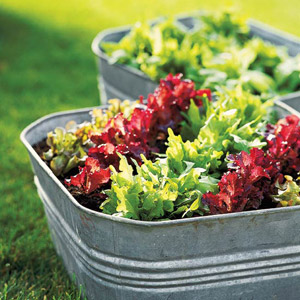
Most vegetables grown in a vegetable container garden do best in full sun (at least 6 hours of direct sun a day). Tomatoes, peppers, and other varieties that often get diseases usually stay healthiest in an open spot with plenty of air circulation.
If you live in a cold climate, you can give your vegetable container garden a head start by placing the pots near a south-facing wall.
If you live in a warmer part of the country, be cautious about setting your vegetable container gardens on a cement patio, which may grow too warm for optimum growth. Put larger containers on dollies or carts; you can move them to various locations depending on the conditions at the time.
Get ideas for growing vegetables in containers here!
continue reading below
Happily, most vegetables aren’t fussy about what kind of vegetable container garden they grow in. The only basic requirements is that the vegetable container garden is large enough to hold the plant and that it has drainage holes so excess water can escape.
When it comes to size, the bigger the pot is, the better, especially for beginners. The reason for this is that large pots hold more soil — and thus, hold moisture longer so you don’t have to water as much.
Look for vegetable container gardens that are at least 10 inches wide and 12 inches deep. Large flowerpots, half barrels, plastic-lined bushel baskets, window boxes, planters, and large containers (like 5-gallon buckets) work just fine.
Some vegetables need particularly large pots to grow in a vegetable container garden. Standard-size tomatoes and vining crops, such as cucumbers, will do best for you in containers 20 inches or more across. Peppers like pots at least 16 inches in diameter. In a pinch, most will still grow in a 5-gallon or larger container.
If your vegetable container garden does not have drainage holes, you will need to add several. Use a 1/4-inch drill bit to create holes in the bottom or along the sides near the bottom. Line the bottom of the pot with screen or landscape cloth to prevent soil from spilling out of the holes.
Plants that grow tall or produce vines — like tomatoes and cucumbers — will be more productive if grown up a support in a vegetable container garden. A wire cage, inserted into the container at planting time, will do. Use larger, heavier containers for trellised plants to minimize the risk of tipping.
Vegetable Container Garden Materials
Not sure what type of container to grow your vegetables in? Don’t fret — typically, you’ll care more about this than your plants will.
In general, plants in terra-cotta (clay) need more attention to watering for a vegetable container garden than other types of pots, because of the porous nature of the terra cotta.
Also think about the color. Dark colors absorb heat — so they may make the soil too warm for some vegetable crops in summer, especially in hot-summer areas.
And avoid vegetable container gardens made of treated wood, as it may contain chemical compounds that could be absorbed by your vegetables.
What Types of Soil to Use in Containers
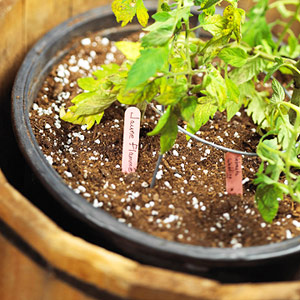
While your vegetables aren’t fussy about the kind of pot they’re in, they do care about the potting soil in your vegetable container garden.
As is the case with most other types of container gardens, your vegetable container garden will do best in potting mixes made for containers. Ask at your nursery for a mix designed for use in larger outdoor containers.
Or save money by blending your own vegetable container garden mix. Use equal parts of peat moss, potting soil, and vermiculite, perlite, or clean sand. Fill the containers to within an inch or two of the rim.
To determine how much potting mix you’ll need, figure:
- 3 pints of soil per 6-inch pot
- 3 1/2 gallons of mix per 12-inch pot
- 6 1/2 gallons of mix per 20-inch pot
How to Plant Vegetables in Containers
Plant your vegetable container gardens the same time you would plant in the garden. Depending on what types of vegetable you want to grow, you can start seeds in your containers, grow transplants from seeds started indoors, or purchase transplants from a garden center.
Here’s a hint: Start vegetable container garden crops such as beans, corn, carrots, radishes, and spinach, from seeds sown directly in the container.
Regardless of whether you are planting seeds or transplants, thoroughly water the container before you plant. Soak the potting mix completely, then allow it to sit for a few hours to drain excess water.
Plant seeds according to the package directions. Because not all seeds will germinate, plant more than you need, then thin the excess later.
Set transplants at the same level they were growing in their pot (except for tomatoes, which you can strip off their lower leaves and plant them deeper in the container).
After planting, water gently but thoroughly to settle the seeds or transplants. Keep the soil in your vegetable container garden from drying out as fast by mulching with straw, compost, leaf mold, or a similar material.
Care Tips for Vegetables in Containers
Watering is the most important thing to watch for in your vegetable container garden. So inspect your vegetables regularly to make sure the potting mix hasn’t dried out.
Here’s a hint: Make watering your vegetable container garden easier by installing a drip-irrigation system. It can automatically irrigate your vegetables for you.
Starting about a month after planting, feed your vegetables about once a week with a water-soluble fertilizer, following the package directions.
Also keep an eye out for weeds and other pests. While plants in containers usually aren’t as susceptible to disease as varieties grown in the ground, you’ll still want to watch for problems.
Remove or treat any plants that show signs of disease or insect damage.
Harvest Tips
Harvest is the most satisfying step. Pick your vegetable container gardening crops as soon as they reach a size where you will enjoy them. Most vegetables are more productive if you harvest early and often. Letting plants “go to seed” will often cause a drop in fruit set.
Click here for more harvest tips!
Fall Care
At the end of the season, add the vegetable container garden soil to your compost pile. Reusing soil from year to year can spread infections and insect infestations. Thoroughly scrub the container to remove all soil. Rinse in a solution of one part bleach to 10 parts water, then rinse with clean water and store in a dry spot.
More Ways to Grow Vegetables in Containers
Container Gardening: Salad
-
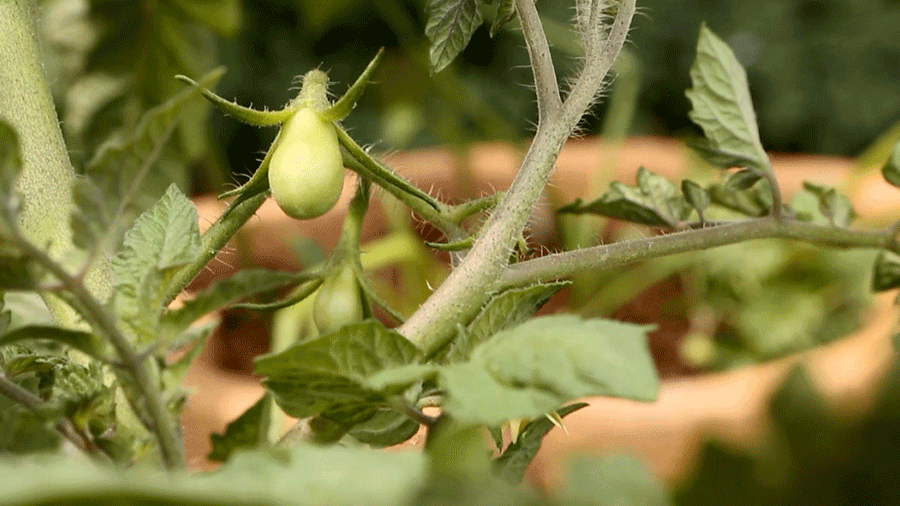
Container Gardening: Salsa
-
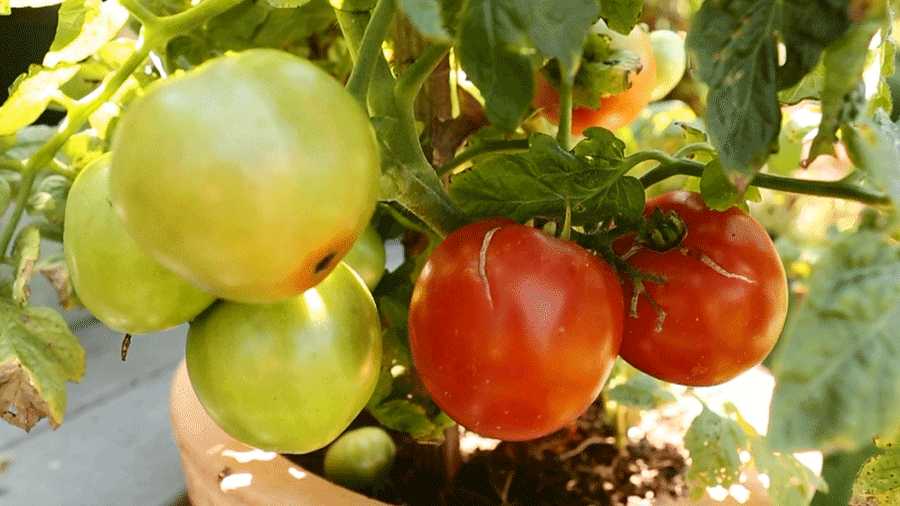
How to Grow Tomatoes in Containers
-
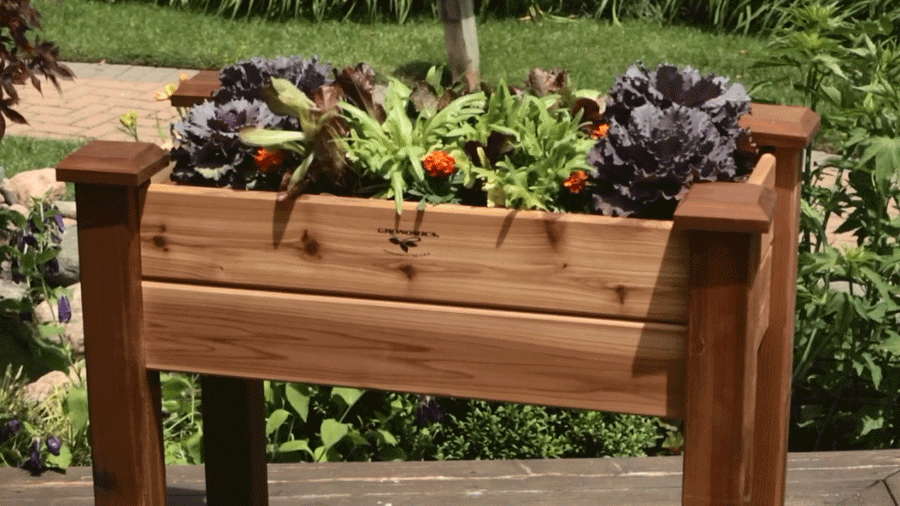
The Secret to Growing a Container Vegetable Garden
-
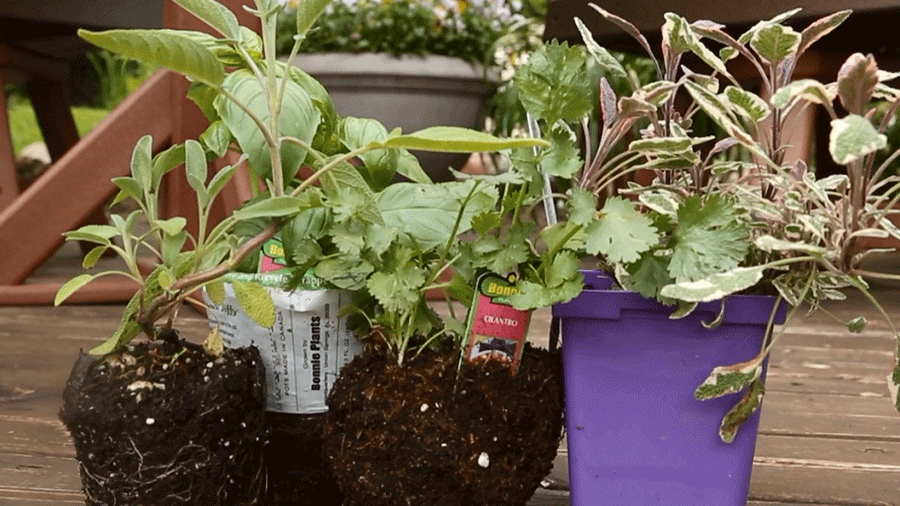
Best Herbs for Container Gardens
Top Vegetables for Containers
Below are the basic instructions for growing a variety of vegetables in containers. Note that the suggested planting instructions are for optimal growth. You can often grow vegetables in small containers with acceptable results. Also, the recommended varieties are just a few of many that will do well in containers. If you can’t locate these specific types, check your garden center staff for other recommendations.
Beets
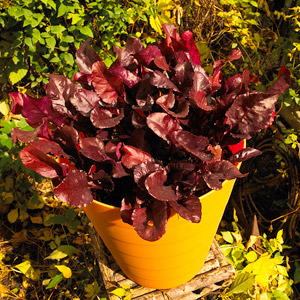
Suggested planting: Direct seed into a 2- to 5-gallon window box.
Recommended Varieties
Bull’s Blood
Ruby Queen
Baby Canning
Red Ace Hybrid
Burpee Golden
Early Red Ball
Broccoli
Suggested planting: One transplant per 5-gallon container.
Recommended varieties
Small Miracle
Green Comet
DeCicco
Cabbage
Suggested planting: One transplant per 5-gallon container. Or with small varieties, one plant per gallon container.
Recommended varieties
Fast Ball
Carrots
Suggested planting: Direct seed into a 2- to 5-gallon deep container. Thin to 3 inches apart.
Recommended varieties
Little Finger
Danver’s Half Long
Short ‘n’ Sweet
Thumbelina
Cucumber
Suggested planting: Two transplants per 5-gallon container. If using vining types, grow on trellis or cage.
Recommended varieties
Salad Bush
Bush Champion
Spacemaster
Park’s Bush Whopper II
Eggplant
Suggested planting: One transplant per 5-gallon container.
Recommended varieties:
Black Beauty
Orlando
Patio Mohican
Green Beans
Suggested planting: Sow directly into a 5-gallon window box.
Recommended varieties
Tendercrop
Bush Romano
Contender
Bush Blue Lake
Kohlrabi
Suggested planting: Direct seed into a 5-gallon container. Thin to three plants.
Recommended varieties
Early White Vienna
Lettuce
Suggested planting: Direct seed or transplant into 1-gallon or larger container.
Recommended varieties
Green Ice
Salad Bowl
Red Sails
Black Seeded Simpson
Buttercrunch
Oakleaf
Tom Thumb
Little Gem
Onion
Suggested planting: Direct seed into 1-gallon or large container. Thin to 2 inches between plants.
Recommended varieties:
Any green onion or scallion
Peas
Suggested planting: Direct seed into 5-gallon container. Grow taller varieties on a trellis.
Recommended varieties
Sugar Bon
Mammoth Melting Sugar
Pepper
Suggested planting: Two transplants per 5-gallon container.
Recommended varieties
Gypsy
New Ace
Long Red Cayenne
Radishes
Suggested planting: Direct seed into 2-gallon or larger container. Thin to 3 inches apart.
Recommended varieties
Champion
White Icicle
Cherry Belle
Spinach
Suggested planting: Direct seed into 1-gallon or larger container. Thin to 3 inches apart.
Recommended varieties
Long Standing Bloomsdale
Melody
Summer Squash
Suggested planting: Direct seed or transplant, two plants per 5-gallon container.
Recommended varieties
Pic-N-Pic
Midnight
Swiss Chard
Suggested planting: Transplant or direct seed four plants per 5-gallon container.
Recommended varieties
Bright Lights
Rhubarb
Tomatoes
Suggested planting: Transplant one plant per 5-gallon container.
Recommended varieties
Vilma
Super Bush
Patio Princess
Pixie
Early Girl
Tumbling Tom
Winter Squash
Suggested planting: Direct seed one plant per 5-gallon container.
Recommended varieties
Butterbush
Early Acorn
Honey Bear
SOURCE:http://www.bhg.com/gardening/vegetable/vegetables/growing-vegetables-in-containers/